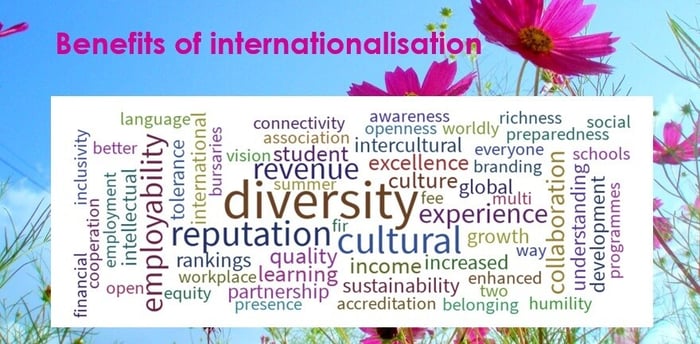Designing shared learning experiences


- Location
- Ireland
- Size
- 100+
- Use case
- Higher Education
"Poll Everywhere adds engagement to a presentation, but it also helps create a group dynamic which is hugely important. Now that we’re meeting online, I’ve noticed that even a simple activity like a word cloud works incredibly well because it takes a team effort."
Andrew Flaus, Vice Dean for Internationalisation at National University of Ireland Galway's College of Science and Engineering, builds connections with diverse audiences through live engagement. “Poll Everywhere has a rich variety of methods you can use to interact with the audience. Word clouds, Q&As, and open-ended questions are just a few of the very valuable activity presenters don’t always consider.”
Sparking two-way conversations
Andrew has been teaching science courses like biochemistry and molecular biology for the last fifteen years and incorporating technology into his lectures from the start. He was recognized with his university’s President’s Award for Teaching Excellence in 2010 for his work with technology enhanced teaching.
When searching for ways to create interactive presentations, Andrew found Poll Everywhere. “The problem with many talks is that they involve one person talking in one direction, so quite a few years ago I started looking for tools that would help me engage the audience. I needed a solution that would allow participants to use their own devices instead of a clicker and that would integrate with my Keynote presentations. Poll Everywhere provided both.”
As part of his efforts to expand NUI Galway’s reach, Andrew has been bringing in audience voices in a variety of events. “Several years ago, I was approached to help with a science talk competition for STEM public engagement called FameLab. This is an annual competition where students and staff give a three minute talk and then audience members get involved by voting. Poll Everywhere lets us run the public vote as a way of engaging attendees since they could just visit the URL on their devices. And with reporting we can demonstrate the impact we have had for funders. Poll Everywhere has become a popular part of this annual competition.”
Connecting with global audiences
A new role Andrew has had for the last five years is in internationalisation, which involves both international recruitment and partnership building between the university and the rest of the world. “All my roles involve actively interacting with people, and this is especially important at a distance.”
Andrew has been connecting with international participants through his real-time activities. “As part of my internationalisation work, I’ve been giving talks and lectures to attendees in Indonesia who are multiple time zones ahead. With Poll Everywhere, both myself in Ireland and the participants in Asia can all see the results populate live on the screen not only to multiple choice questions but also to open-ended activities where participants could respond with longer submissions. That’s worked very well for us.”
Recently, Andrew has been incorporating word clouds into his work.
"During an internal workshop on internationalisation within our university, we could all talk about what was important no matter where attendees were joining from. Generating the word cloud creates a sense of community. Likewise during my public engagement events, the audience felt together and contributed to the overall outcome."

Planning engaging presentations
As a general rule of thumb, Andrew embeds at least five Poll Everywhere into his Keynote presentations for a fifty minute session. “I always start with an icebreaker activity at the beginning that gets everyone prepared for the interactivity throughout the rest of the session. Even then, you’re collecting a bit of information about a peripheral topic and getting to know your audience.”
Throughout the rest of the presentation, Andrew poses questions with intention. “Every five or six slides, I typically ask a question either which checks understanding or cues the audience to think about a particular topic before I tell them about it. This way, I can pique their interest and get them engaged. Depending on the context, I also like to include an activity towards the end of the presentation as a way to close off the conversation.”
Andrew believes that lectures and presentations should be a way to engage attendees in discussions rather than to measure statistics. “I give talks within the university about teaching technologies, and one point that I’ve advocated for very strongly is that it’s not just about testing students or generating data. What’s most important, especially when we're online, is building this sense of common purpose. You’re not just the lecturer talking at the audience, you’re doing something to help everyone achieve knowledge and understanding together.”
"Poll Everywhere activities give a very good impression of whether your messaging was correct for the presentation. You can use them in teaching and also in broader types of presentations and with very diverse audiences to build community"
Poll Everywhere for learning and development
Power your next professional development training with live audience feedback.